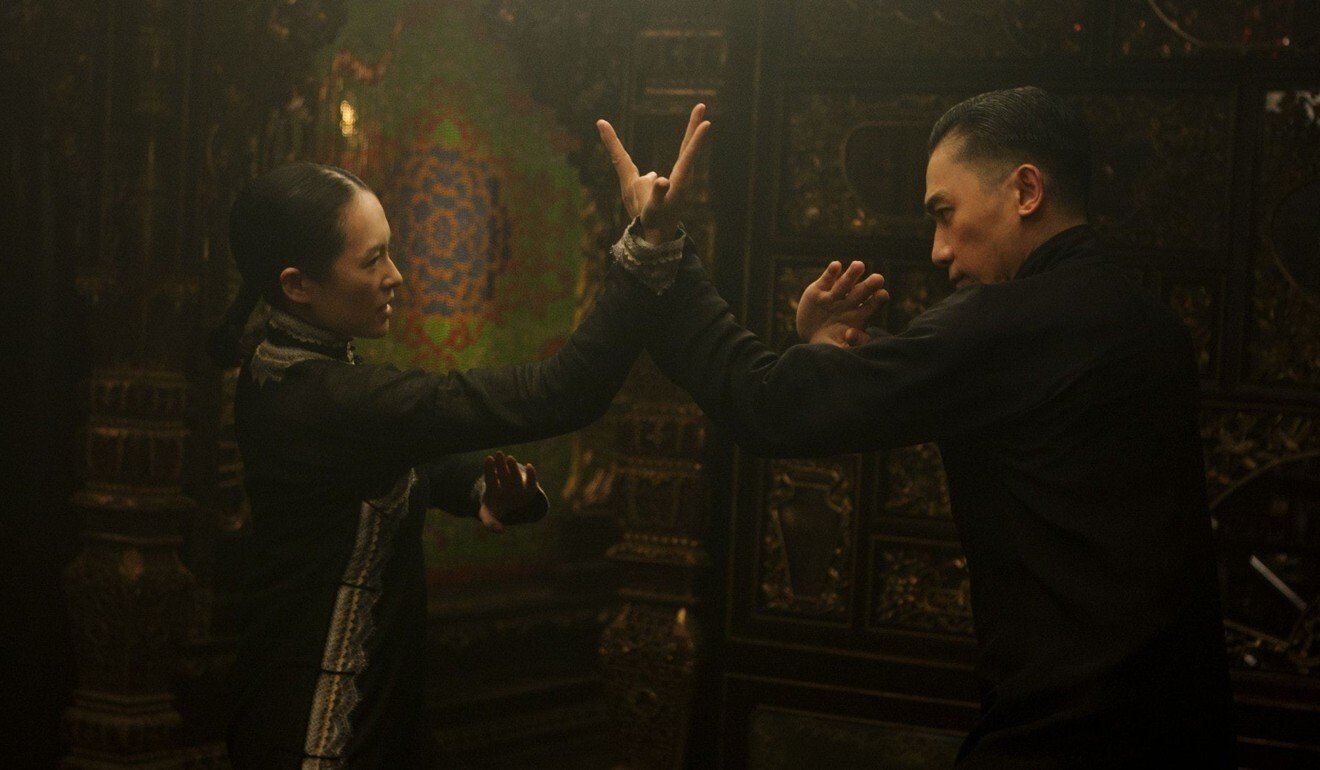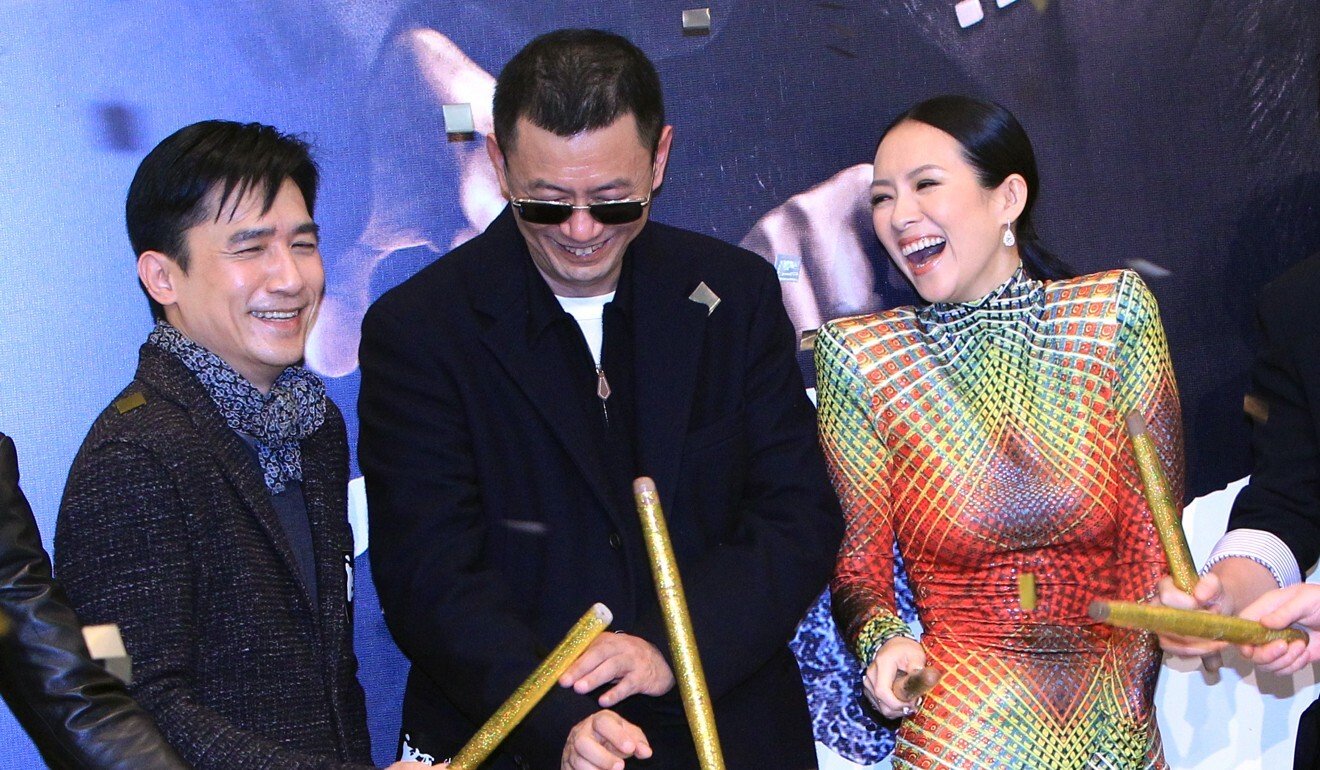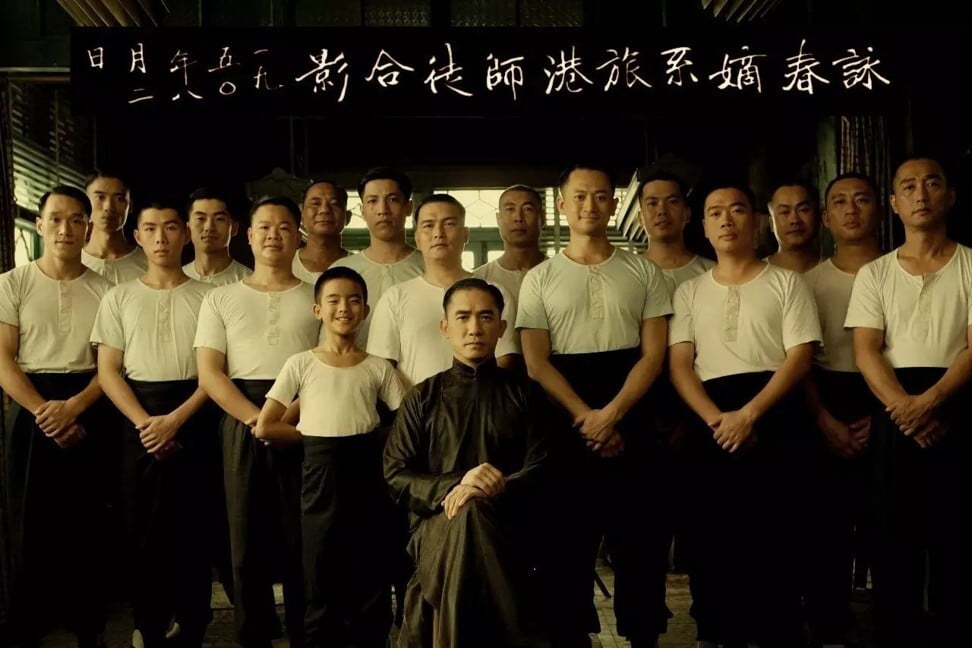
The Grandmaster: how Wong Kar-wai’s martial arts epic captured the essence of Chinese culture and history
- Film shows with precision the different martial arts styles, with choreography by The Matrix’s Yuen Woo-ping, and sets them against 20th century Chinese history
- The story starts with Ip Man defending southern fighting styles against a master of northern style, then follows the kung fu master to Hong Kong
Wong Kar-wai’s The Grandmaster, which was 12 years in the making, is an elegant synthesis of martial arts and Chinese history. The 2013 film sets precise depictions of martial arts styles, choreographed by Yuen Woo-ping, against the broad sweep of 20th century Chinese history, and shows the impact the century’s events had on the martial artists caught up in them.
The story revolves around legendary exponent of the wing chun style of kung fu Ip Man (played by Tony Leung Chiu-wai), who lived through the Chinese Republic – which Wong has described as a “golden age of Chinese kung fu” – and the anti-Japanese war before relocating to Hong Kong to found his well-known martial arts school.
“I started off wanting to look at Ip Man the person. Later on, however, I discovered that what I really wanted was to examine the whole martial arts landscape,” Wong told Clarence Tsui in a Hollywood Reporter interview. “I think that the biggest question for me was, what made Ip Man so remarkable? … His life is a microcosm of contemporary Chinese history.”
Partially out of a desire to make the film accessible to different audiences, and partially out of a wish to experiment, Wong made the film available in four different versions.
The Hong Kong/mainland Chinese version of The Grandmaster focuses more on the historical elements, while the shorter US version concentrates on the relationship between Ip Man and northern-style martial artist Gong Er (Zhang Ziyi). There is also a European version, and a 3D version created by Wong himself, which the director has said is his favourite.
The story proper begins in Foshan, southern China, in the Republican era. Ip Man takes up a challenge by ageing northern master Gong Yutian (Wang Qingxiang) – a specialist in the baguazhang style of martial art – and undertakes to uphold the honour of the southern martial arts schools against their northern counterparts. Ip wins the match, which does not involve actual combat, but he is then defeated by Gong Yutian’s daughter Gong Er, with whom he forms an emotional bond.
Hong Kong martial arts cinema: everything you need to know
After enduring the deprivations of the Japanese occupation, during which he loses his wealth, Ip leaves his wife and moves to Hong Kong to found a martial arts school. Gong Er remains in China, where her father is killed by his former student Ma San (Max Zhang Jin), who is working for the Japanese.
This second strand of the story focuses on Gong Er’s slow-burning quest for revenge, which she finally achieves in the freezing cold of a railway station.
In the Hong Kong version, time is also given to “The Razor” (Chang Chen), a Nationalist agent and bajiquan expert (bajiquan, or Eight Extremities Fist, was the martial art of choice for the bodyguards of China’s emperors) who represents another aspect of the era’s complicated history.

Wong wanted to portray the martial arts styles, and their histories, as accurately as possible – he has described the film as “hardcore kung fu” – and spent three years talking to martial arts masters, watching how they lived and how they practised. Some masters said they did not want to demonstrate their styles to him because they did not want Wong to depict them losing to Ip Man’s wing chun.
In the film, Ip says that martial arts are about precision, and that is how Wong presents them in The Grandmaster. There is not an overabundance of wirework – although there is some – but in spite of the many fast cuts and impressionistic effects, the styles look accurate. Wong takes care to show the footwork as well as the kicks and punches, and also focuses on his characters realistically working out their next move during a fight.
Leung, who had not learned martial arts when he shot Wong’s Ashes of Time in 1993, began to learn wing chun the year before The Grandmaster went into production, and this helped the film’s authenticity. Taiwanese actor Chang also leaned bajiquan, the martial arts style of his character, and even won a provincial competition.

As the director has pointed out, a real fight can be over very quickly – in a matter of blows – so The Grandmaster is still “movie kung fu” rather than the real thing. But the characters do not mix martial styles, and this makes for a more authentic representation.
The first scene features baguazhang, a style which is based more on a circular strategy than a particular striking technique. The baguazhang fighter moves in circles to find a weakness to exploit in the opponent. The second scene features xingyiquan, a Song dynasty “internal” style in which spear techniques are applied to the body’s combat movements.
Every Wong Kar-wai feature film ranked, in order of greatness
Both styles are beautifully presented in bouts which occur in tight, closed spaces. Gong Er’s later fight against the Japanese collaborator Ma San, in which both use baguazhang, is the highlight of the film.
The martial arts styles also reflect the personalities of the characters. Ip is straightforward and practical – like wing chun itself – while Gong Er is elliptical by nature, like baguazhang, unable to move forward with her life because she has trapped herself in the past with her vow of revenge.
“I hope that the kung fu moves in the film correspond to the plot,” Wong told China’s Southern Weekly. “There is a move in xingyiquan called ‘old monkey hangs up his badge’ … that move is lethal. Ma San at the time worked for the Japanese militants. He hoped to take an official post. But Master Gong told him that the key to the move is turning back. I feel that corresponds to the plot. Old Master Gong hoped that Ma would realise his mistake [in working for the Japanese].”

The film was also intended as a love letter to martial arts, which, Wong laments, are now dying out in Hong Kong, as parents do not want their children to study them.
Thanks to Film at Lincoln Center for help with the screenings.
In this regular feature series on the best of Hong Kong martial arts cinema, we examine the legacy of classic films, re-evaluate the careers of its greatest stars, and revisit some of the lesser-known aspects of the beloved genre. Read our comprehensive explainer here.
Want more articles like this? Follow SCMP Film on Facebook
